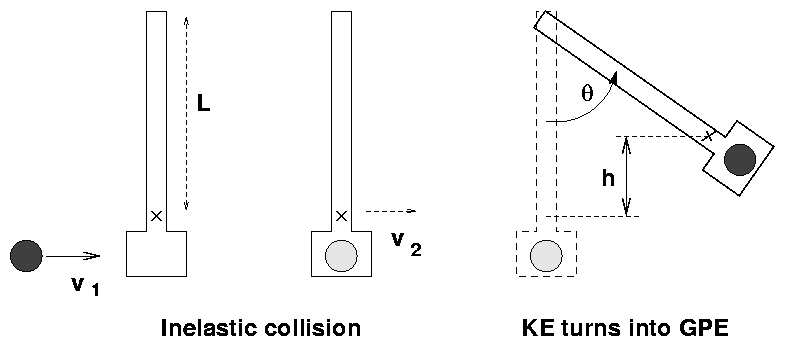
 Copyright © Michael Richmond.
This work is licensed under a Creative Commons License.
Copyright © Michael Richmond.
This work is licensed under a Creative Commons License.
In real life, collisions are often messy affairs which require a mixture of techniques to understand. As an example, consider the ballistic pendulum.

You can break the action into two pieces:
Your first job today is to figure out the speed v1 with which the ball is fired from the catapult, by measuring the angle theta (and some other quantities).
You should end up with one table showing all your measurements, and the uncertainty associated with each measurement. You should also have a value of v1, the velocity of the ball when it leaves the muzzle of the gun.
Bonus! Compute the uncertainty in v1.
As you try to convert the uncertainties in the values you measured in class into an uncertainty in the initial speed v1 of the ball, you may find it useful to peruse
- this GENERAL guide to using uncertainties in calculations
- this SPECIFIC example of using uncertainties in the ballistic pendulum; the numbers will be different than yours, but the method should be the same
Your second job is to calculate the spring constant k of the spring in the gun.
Bonus: Compute the uncertainty in your value of the spring constant, using uncertainty in KE and uncertainty in distance compressed.
 Copyright © Michael Richmond.
This work is licensed under a Creative Commons License.
Copyright © Michael Richmond.
This work is licensed under a Creative Commons License.